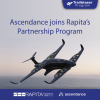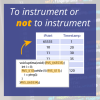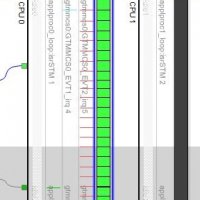This post introduces a five step process for optimizations. The key to this process is to understand that step 4 (the technical work) is the most expensive, risky and time-consuming part. Therefore this process is designed to minimize the amount of time wasted in that step by avoiding optimizing the wrong things or spending unnecessary effort optimizing beyond the target.
- Identify Candidates
What are the optimization candidates? Make a shortlist of places to try optimizations and targets for what you would like to reduce there. Of course to do this, you need good information, as discussed in the previous post. - Analyse the potential gains and set targets for what you would like to be able to achieve.
If a candidate consumes 20% of the worst case execution time and you optimize it by 50%, you get at most 10% back. Is that enough justification to optimize it? - Know "what if".
What if you were actually successful in optimizing the function by 50%? Does the worst case path switch somewhere else? If so, there's no point in continuing to optimize that function. - Try an optimization.
Actually do some technical work and perform an optimization. - Validate.
Measure the gain (or loss). Does the code still pass the tests? Did you achieve your target identified in step 2? Roll back if the work is not good enough.
Ian Dr Ian Broster is to run a half-day training session on software optimization at the forthcoming Reliable Software Technologies Conference - Ada Europe 2010.
The conference program is available here. Please register on-line and select Tutorial T5 (I. Broster).
The event takes place on the afternoon of Monday 14th June 2010 in Valencia, Spain.
For more information, or if you are unable to attend on this date and would like to take part in a similar tutorial, please feel free to contact us.

 Rapita partners with Asterios Technologies to deliver solutions in multicore certification
Rapita partners with Asterios Technologies to deliver solutions in multicore certification
 SAIF Autonomy to use RVS to verify their groundbreaking AI platform
SAIF Autonomy to use RVS to verify their groundbreaking AI platform
 Hybrid electric pioneers, Ascendance, join Rapita Systems Trailblazer Partnership Program
Hybrid electric pioneers, Ascendance, join Rapita Systems Trailblazer Partnership Program
 What does AMACC Rev B mean for multicore certification?
What does AMACC Rev B mean for multicore certification?
 How emulation can reduce avionics verification costs: Sim68020
How emulation can reduce avionics verification costs: Sim68020
 Multicore timing analysis: to instrument or not to instrument
Multicore timing analysis: to instrument or not to instrument
 How to certify multicore processors - what is everyone asking?
How to certify multicore processors - what is everyone asking?
 Certifying Unmanned Aircraft Systems
Certifying Unmanned Aircraft Systems
 DO-278A Guidance: Introduction to RTCA DO-278 approval
DO-278A Guidance: Introduction to RTCA DO-278 approval
 ISO 26262
ISO 26262
 Data Coupling & Control Coupling
Data Coupling & Control Coupling
 IEEE SMC-IT/SCC 2025
IEEE SMC-IT/SCC 2025
 DASC 2025
DASC 2025
 DO-178C Multicore In-person Training (Fort Worth, TX)
DO-178C Multicore In-person Training (Fort Worth, TX)
 DO-178C Multicore In-person Training (Toulouse)
DO-178C Multicore In-person Training (Toulouse)


















